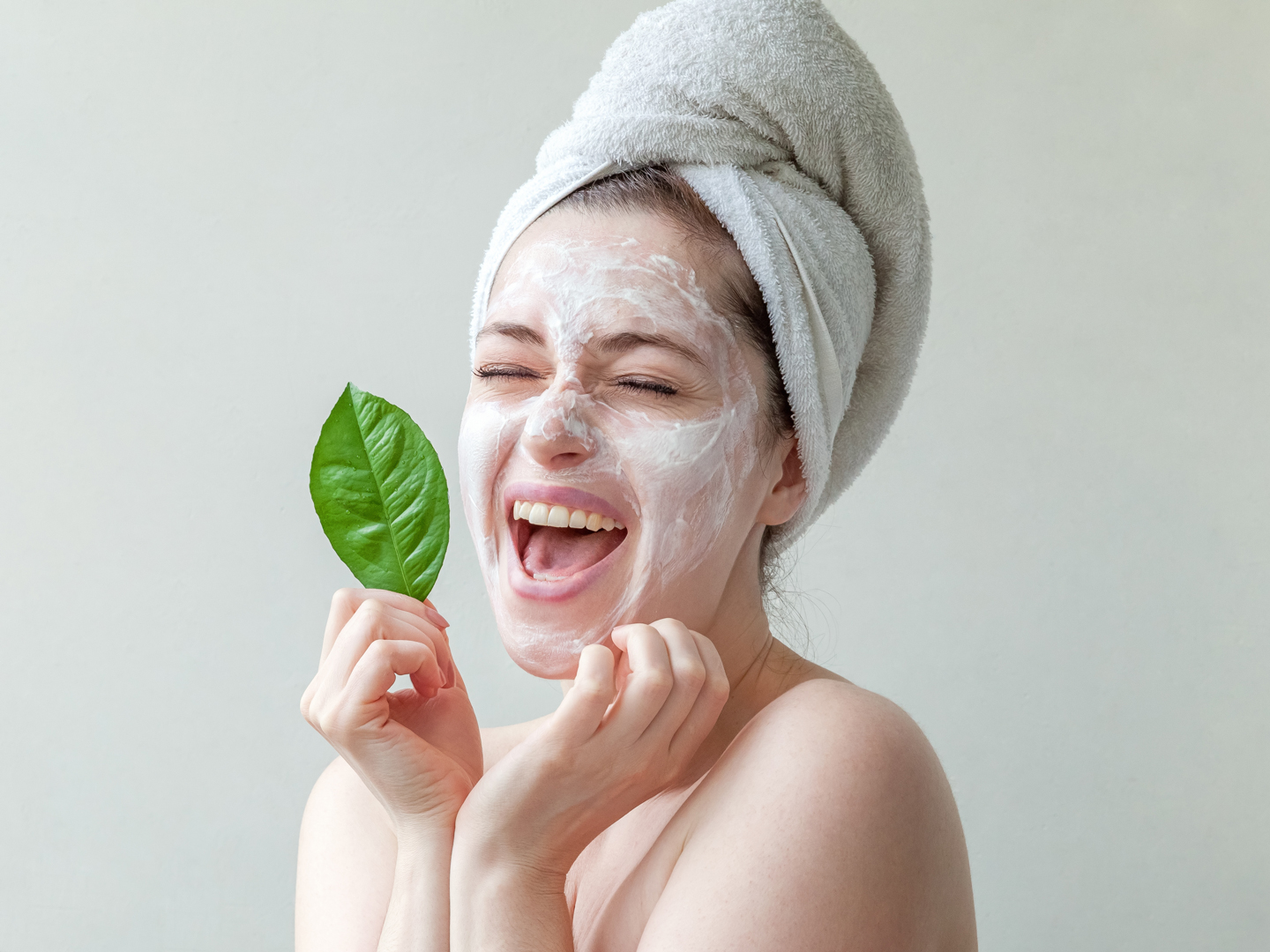Featuring premium ingredients for mature, oily, acne-prone, and dry skin.
 Regardless of skin type and skin concerns, moisturizer is a key component to anyone’s skin care routine. The right moisturizer can help to improve the texture and tone of your skin, and can even help to reduce acne breakouts and the formation of fine lines. In this guide to creating personalized, DIY moisturizers, we’ll discuss the benefits of DIY moisturizers over store-bought options, and give you all the details about the best ingredient options for different skin types.
Regardless of skin type and skin concerns, moisturizer is a key component to anyone’s skin care routine. The right moisturizer can help to improve the texture and tone of your skin, and can even help to reduce acne breakouts and the formation of fine lines. In this guide to creating personalized, DIY moisturizers, we’ll discuss the benefits of DIY moisturizers over store-bought options, and give you all the details about the best ingredient options for different skin types.
Why make a DIY face moisturizer?
There are plenty of great store-bought moisturizers out there, and from a convenience standpoint, it often makes sense to opt for these. However, there are plenty of reasons why a homemade face moisturizer can be a better option. Store-bought moisturizers can often contain unwanted ingredients such as stabilizers, dyes, fragrances, and preservatives. No matter how wonderful the main ingredients may be, if a moisturizer formula includes parabens, phthalates, or artificial fragrances, it’s definitely better to steer clear. You might not see the pernicious effects of these synthetic ingredients right away, but they can build up in your system over time, and possibly cause serious damage.
If you’re dead-set on buying a store-bought moisturizer, you should make sure to opt for a natural product, and to research all of the ingredients on its label (the Environmental Working Group’s database is a helpful tool) so that you know exactly what’s going onto your skin. However, making your own DIY moisturizer is the best way to ensure that you’re only putting beneficial ingredients onto your skin (and it’s customizable to your liking!).
How to make a DIY moisturizer
Everyone’s skin is unique, and different ingredients will have different effects upon your skin. That’s why we’ve compiled this comprehensive guide to creating the perfect, homemade moisturizer for different skin types.
 DIY moisturizer for mature skin
DIY moisturizer for mature skin
To fight the effects of aging—which include fine lines, wrinkles, dark spots, and roughness—you’ll want to create a moisturizer that’s made up of antioxidant-rich ingredients. Antioxidants help to fight free radicals that can have harmful effects at the cellular level, damaging cell membranes and even resulting in cell deaths. There are many substances that can trigger excessive free radical production, including fried foods, tobacco and other air pollutants, and alcohol. But while avoiding these substances may help to prevent the generation of new free radicals within your skin tissue, it’s also important to load up on antioxidants to fight any free radicals that are already there.
To create a moisturizer with the highest possible antioxidant concentration, you’ll want to start with a carrier oil that’s rich in antioxidants. Try using one or more of the following:
- Sweet almond oil: has a high content of antioxidant vitamin E.
- Apricot kernel oil: has a high content of antioxidant vitamin A.
- Avocado oil: contains antioxidant vitamins A, E, and D, and has a particularly high concentration of essential fatty acids.
If you’d like to create a moisturizer that’s a bit thicker in texture, you can also add a natural plant butter by whipping it with a fork to combine it with the oil, creating a fluffy, creamy mixture. Here are our favorites for aging skin:
- Cocoa butter: contains antioxidant vitamin E, and is known for its healing and moisturizing properties.
- Shea butter: contains antioxidant vitamins A, E, and F. It also delivers collagen and essential fatty acids to your skin.
Finally, you can add one or more additional oil to your moisturizer. The right oil can deliver antioxidants and healthy, fatty acids to your concoction, and can also add a delicious, totally natural scent. Here are some of the best oils for aging skin:
- Rosehip oil: contains beta-carotene, a precursor to antioxidant vitamin A. It’s also rich in gamma-linolenic acid, which helps to boost your skin’s defensive barrier, thereby protecting against further damage. (To read more about rosehip oil, check out our guide to the Best Rosehip Oils for Face.)
- Carrot seed oil: contains carotene and other antioxidants, and is often used to help improve the skin’s elasticity. Note that it’s important to dilute carrot seed oil, and to test a small amount on your skin, as high concentrations can cause skin reactions.
- Pomegranate seed oil: contains flavonoids—plant chemicals that have antioxidant properties and help to protect the skin from damage. It also contains a blend of essential, fatty acids—including linoleic acid and oleic acid—to protect your skin’s defensive barrier, improve texture, and lock in hydration.
- Coffee arabica seed oil: rich in antioxidants and fatty acids, and boasts impressive anti-inflammatory properties. It can actually increase the skin’s production of collagen and elastin, resulting in more youthful and supple skin.
 DIY moisturizer for acne-prone skin
DIY moisturizer for acne-prone skin
To make the perfect moisturizer for acne-prone or oily skin, you’ll want to select carrier oils, thickeners, and essential oils that will won’t clog your pores. You’ll also want to include some ingredients that have antibacterial properties to fight acne-causing bacteria in your skin. And finally, you’ll want to incorporate healing, anti-inflammatory ingredients to help your skin recover from past and present breakouts.
The first step to building the perfect, homemade, anti-acne moisturizer is to select a carrier oil that’s non-comedogenic (in other words, one that won’t clog pores). Here are some of our favorites:
- Abyssinian oil: non-comedogenic, contains plenty of fatty acids, and has emollient properties to help deliver nutrients into your skin.
- Argan oil: one of the least comedogenic oils out there, making it perfect for keeping acnegenic skin moisturized. It’s known for its healing properties, and it contains plenty of the antioxidant vitamin E.
- Jojoba oil: it’s so similar in feel to our skin’s natural oil that it can help balance oil production in our skin, preventing against overly dry or oily skin. It’s hard to find a better carrier oil than jojoba oil when it comes to balancing oily skin. Thanks to its light, fast-absorbing texture, jojoba oil leaves your skin feeling smooth and silky, never greasy.
To thicken your moisturizer, we recommend that you stick to shea butter. Other plant butters, like cocoa and coconut butter, are fairly comedogenic and therefore not great options for acne-prone skin. Shea butter, on the other hand, is often recommended to treat acne due to its antibacterial and anti-inflammatory properties. To thicken your moisturizer with shea butter, whisk small amounts of the shea butter into your chosen carrier oil until the mixture reaches your desired consistency.
Finally, you can add one or more essential oils with antibacterial properties, in order to make an anti-acne moisturizer that really packs a punch. We recommend using some combination of the following:
- Tea tree oil: has strong antibacterial and antifungal properties. You should only use it in small concentrations, however, because it can irritate the skin if too much is applied.
- Juniper berry essential oil: Juniper berry essential oil has an antibacterial effect upon the skin. Like tea tree oil, it should be diluted before application to the skin.
- Peppermint oil: can also help to fight acne-causing bacteria in your skin. Meanwhile, it helps to boost circulation to your skin, boosting the flow of nutrients from your blood, and thereby stimulating the healing process.
 DIY moisturizer for dry and damaged skin
DIY moisturizer for dry and damaged skin
If you’re suffering from the secondary effects of dry skin, which include inflammation, roughness, and redness, there are plenty of natural, restorative ingredients out there to help stimulate your skin’s regenerative process. In order to nurture dry and damaged skin, you’ll want to select ingredients with high amounts of essential fatty acids. These fatty acids will help to deliver nutrients to your skin, lock in moisture, and strengthen your skin’s defensive barrier.
First, you’ll want to choose a carrier oil that contains plenty of essential fatty acids. Some of the best carrier oils for dry skin include:
- Grapeseed oil: contains 63-72% linoleic acid, and contains oleic acid as well. These fatty acids are excellent for healing inflammation and restoring hydration to the skin.
- Tamanu oil: contains linoleic acid, oleic acid, stearic acid, and palmitic acid. Its high content of fatty acids makes it ideal for healing scars and soothing irritation. Tamanu oil has a thick consistency, and should be mixed with another carrier oil to make application easier.
- Shea nut oil: contains linoleic acid, oleic acid, and stearic acid. It helps to bolster your skin’s defensive barrier, keeping moisture in and irritants out.
To thicken your moisturizer, we recommend that you choose from one of the following natural, plant butters. You can whip the plant butter and carrier oils together, adding small amounts of plant butter until your moisturizer reaches the perfect consistency.
- Shea butter: contains essential fatty acids as well as antioxidants, and is known for its powerful healing properties.
- Cupuacu butter: rich in fatty acids, as well as B vitamins that help repair skin and promote healthy new cell growth.
Finally, you can boost your moisturizer by adding one or more oils with healing properties. Some of the best plant oils for restoring dry, damaged skin include:
- Pine nut oil: contains linoleic acid, oleic acid, and pinolenic acid (a fatty acid that is found only in pine nuts). It helps to promote hydration, circulation, and elasticity.
- Lavender oil: known for its soothing properties, and is a great option when it comes to calming down the redness that can occur as a result of inflammation. Lavender oil can irritate the skin when it’s applied in intense concentrations, so you should be sure to add just a drop of lavender or two to your moisturizer, especially if you have sensitive skin.
Once you’ve formulated your DIY moisturizer, you should store it in a sterilized jar or bottle in a cool, dry place. (If you refrigerate it, it might become too hard to be easily used.) Before using your moisturizer, you should make sure to remove any makeup or sunscreen from your skin. This prevents against clogged pores and infection. You can also exfoliate and tone your skin prior to moisturizing.
A DIY moisturizer is the best way to ensure that you’re only putting skin-healthy ingredients onto your face. Not only can you control what the ingredients are. You can control where they’re sourced from, and you can mix and match them to create your ideal scent and texture.
On a roll for DIY skin care? Here’s what to make with those extra ingredients you have on hand:
How to Use Shea Butter for Hair to Deeply Restore and Protect: With an easy DIY conditioner, hair mask, and heat protectant to shield your locks against damage.
DIY Eyelash Serum for Stronger, Longer Lashes: Featuring 4 simple ingredients for stronger, longer lashes.


 DIY moisturizer for mature skin
DIY moisturizer for mature skin DIY moisturizer for acne-prone skin
DIY moisturizer for acne-prone skin DIY moisturizer for dry and damaged skin
DIY moisturizer for dry and damaged skin